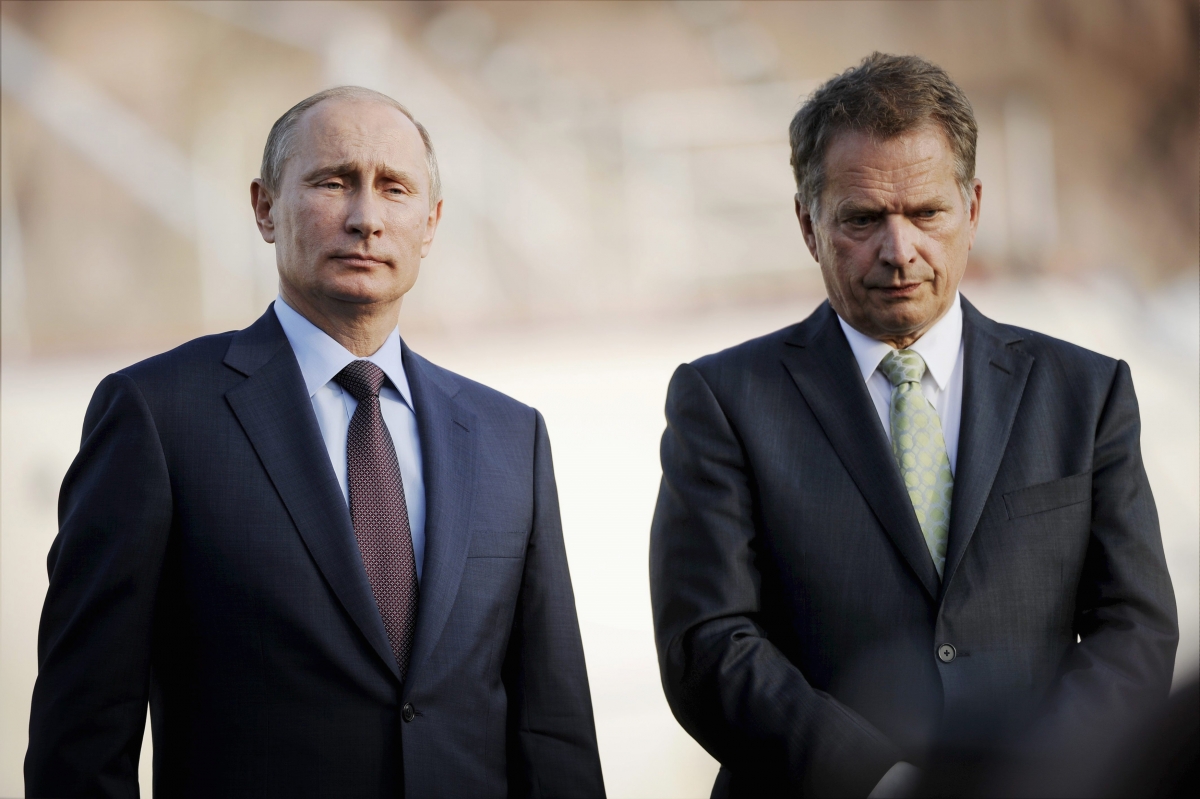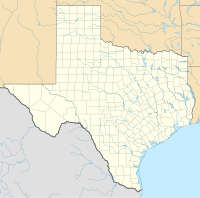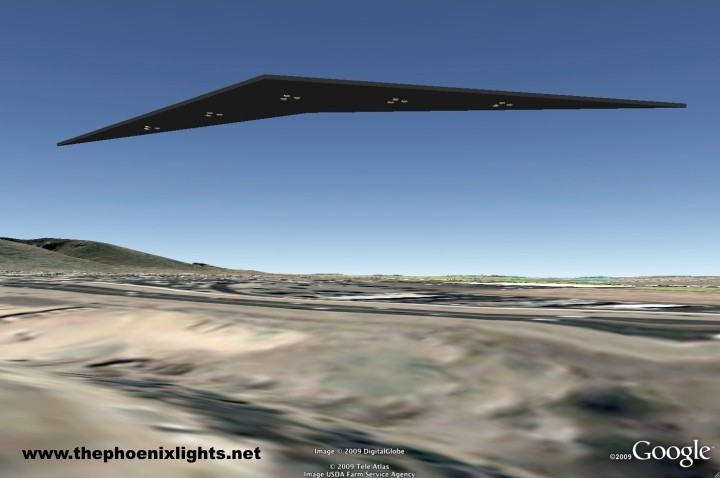

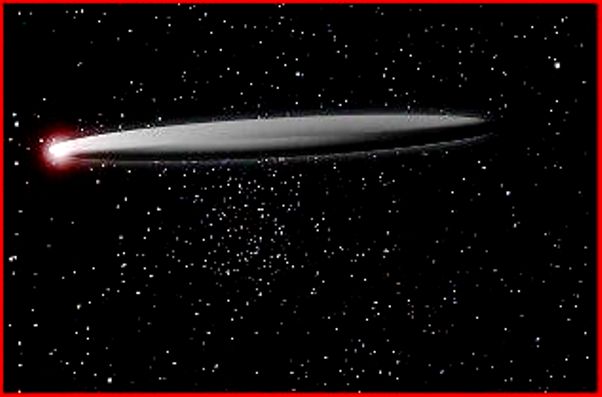




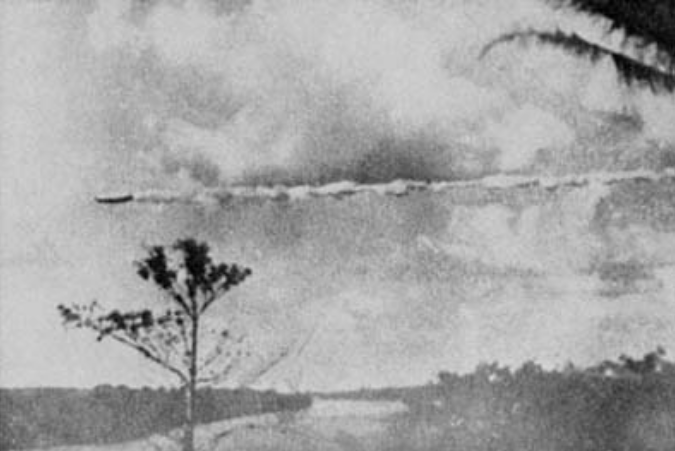
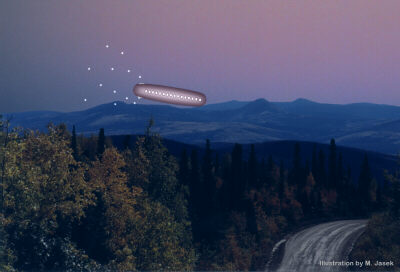
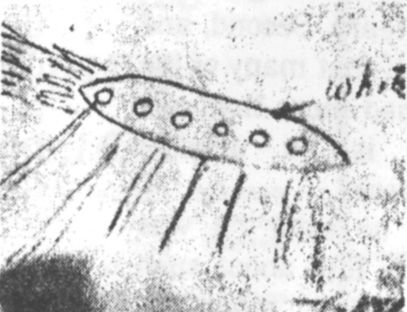
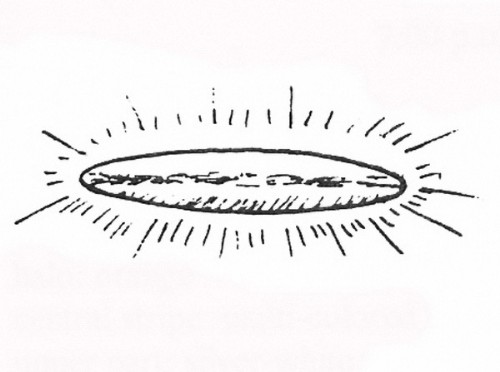


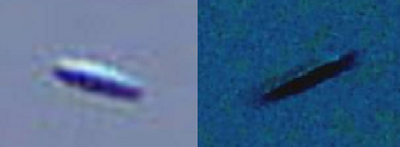
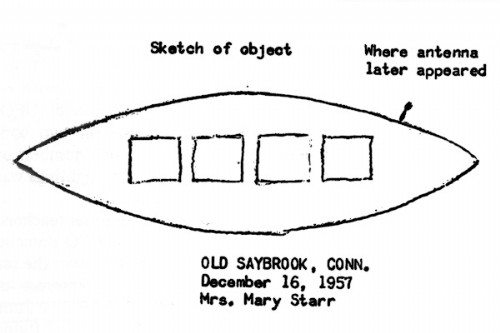

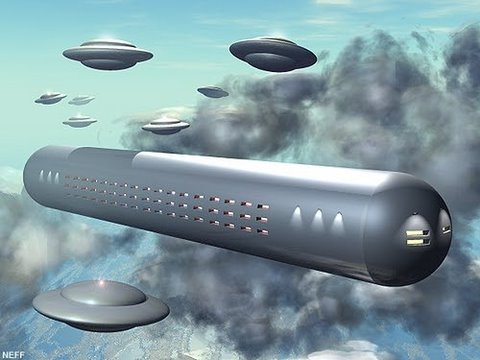

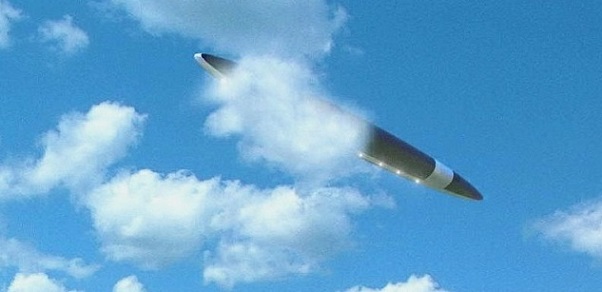

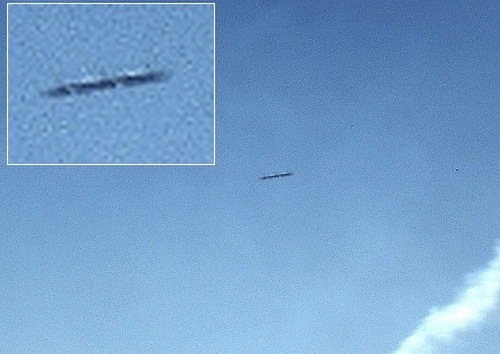
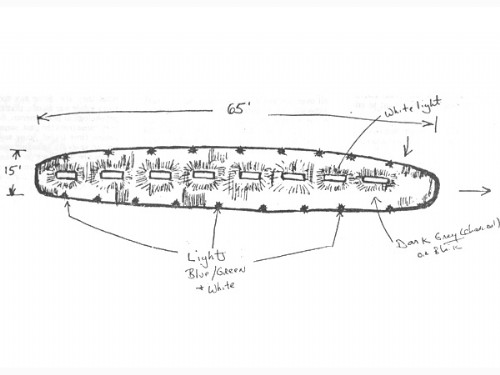
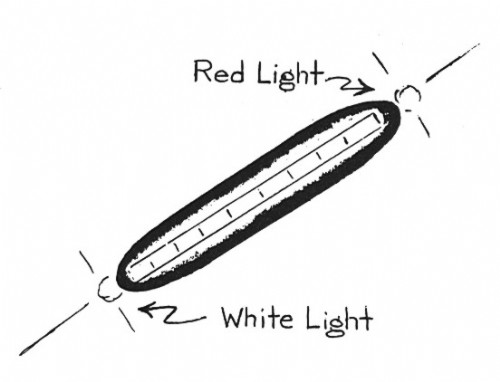
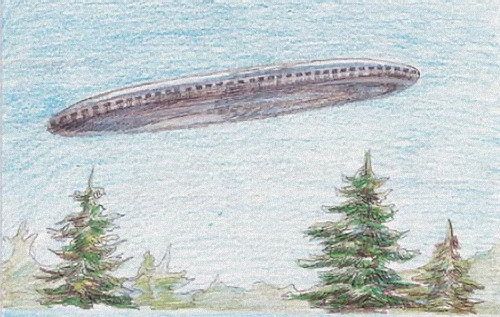

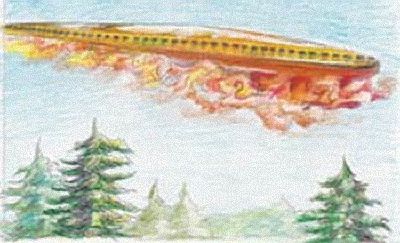


Chiles-Whitted UFO encounter
From Wikipedia, the free encyclopedia
The
Chiles-Whitted UFO encounter occurred on July 24, 1948 in the skies near
Montgomery, Alabama.
[1]
Two commercial pilots, Clarence S. Chiles and John B. Whitted, claimed
that at approximately 2:45 AM on July 24 they observed a "glowing
object" pass by their plane before it appeared to pull up into a cloud
and travel out of sight.
[2] According to Air Force officer and
Project Blue Book supervisor
Edward J. Ruppelt, the Chiles-Whitted sighting was one of three "classic" UFO incidents in 1948 that convinced the personnel of
Project Sign, Blue Book's predecessor, "that UFO's were real."
[3] However, later studies by Air Force and civilian researchers indicated that Chiles and Whitted had seen a
meteor, possibly a
bolide, and in 1959 Project Blue Book formally stated that a meteor was the cause of the incident.
[4]
The incident
In the early morning hours of July 24, 1948, Clarence Chiles, chief pilot, and John Whitted, co-pilot, were flying an
Eastern Airlines Douglas DC-3 passenger plane near
Montgomery, at about 5,000 feet altitude.
[5] The night sky was clear with "the Moon, four days past full, shining through scattered clouds."
[6]
At about 2:45 AM, Chiles "saw a dull red glow above and ahead of the
aircraft." He told Whitted "Look, here comes a new Army jet job."
[7]
The object closed on their DC-3 in a matter of seconds, and both men
later said they saw the object fly past the right side of their plane at
a high rate of speed before it pulled "up with a tremendous burst of
flame out of its rear and zoomed up into the clouds." They observed the
object for a total of 10 to 15 seconds.
[8]
Chiles and Whitted stated that the object "looked like a wingless
aircraft...it seemed to have two rows of windows through which glowed a
very bright light, as brilliant as a magnesium flare."
[9]
Both pilots claimed the object was 100 feet long and 25-30 feet in
diameter, torpedo-or-cigar shaped, "similar to a B-29 fuselage", with
flames coming out of its tail.
[10]
Only one of the plane's passengers, C.L. McKelvie, saw anything
unusual. He reported seeing a "bright streak of light" that flashed by
his window.
[11]
Investigation and Explanation
Shortly after landing in
Atlanta, Georgia, Chiles and Whitted reported their sighting to the US Air Force.
[12] They were interviewed by personnel from
Project Sign,
the first Air Force research group assigned to investigate UFO
sightings. The personnel found that the two pilots did disagree on some
details: Chiles claimed to see a lighted cockpit, long boom on the nose
of the object, and the center section was transparent. Whitted did not
see a cockpit or boom, and instead of the center section being
transparent he claimed to see a series of rectangular windows. Neither
pilot had heard any sound, and although some books and articles would
later claim the plane had been hit by turbulence from the object, both
pilots and the passenger who saw the "streak of light" stated that the
plane was not affected at all by the object.
[13]
USAF Captain Edward Ruppelt would write that "according to the
old-timers at ATIC (Air Technical Intelligence Center), the
[Chiles-Whitted] report shook them worse than the
Mantell Incident...this was the first time two reliable sources had been really close enough to a UFO to get a good look."
[14] Project Sign's personnel developed a map of the object's trajectory which showed that it would have passed over
Macon, Georgia.
[15]
When an Air Force crew chief at Robins Air Force base near Macon
reported seeing "an extremely bright light pass overhead at high speed"
on the same night as the Chiles-Whitted incident, it "seemed to confirm
the [Chiles-Whitted] sighting", Ruppelt wrote.
[16]
According to Ruppelt, as a result of the Chiles-Whitted incident and
earlier sightings in 1947 and 1948, Project Sign's personnel decided to
send an "Estimate of the Situation" to Air Force Chief of Staff
Hoyt S. Vandenberg.
The Estimate of the Situation "was a rather thick document with a black
cover...stamped across the front were the words TOP SECRET."
[17] Project Sign's conclusion "was that [UFOs] were interplanetary!"
[18]
However, Gen. Vandenberg rejected the Estimate of the Situation in
October 1948, citing that "the report's evidence was insufficient to
support its conclusions."
[19] Additionally, Dr.
J. Allen Hynek, an astronomer at
Ohio State University
and a scientific consultant to Project Sign, concluded that Chiles and
Whitted had actually seen a very bright meteor. Dr. Hynek noted that
"the flaming tail and sudden disappearance were consistent with the
brief passage of a meteor."
[20]
Hynek also stated that a large number of bright meteors had been
observed by amateur astronomers on the night of July 23-24. As for the
rectangular windows and cockpit that Chiles and Whitted claimed to have
seen on the object, Hynek wrote that "It will have to be left to the
psychologists to tell us whether the immediate trail of a bright meteor
could produce the subjective impression of a ship with lighted windows."
[21]
Although a Project Sign officer disagreed with Dr. Hynek's explanation,
arguing that "it is obvious that this object was not a meteor" and that
the object should remain labeled as unidentified, later researchers
supported Dr. Hynek's conclusion.
[22] Dr.
Donald Menzel, an astronomer at
Harvard University
and a prominent UFO skeptic of that era, noted that July 24 "falls into
a period of greatly increased meteor activity, when the Earth is moving
through the Aquarid streams...the reports [from amateur astronomers]
for the Southeast for [July 24] have particular interest for the
Chiles-Whitted case."
[23]
On the night of July 24 an observer in Alabama "counted fifteen meteors
in one hour's watching." Two days after the Chiles-Whitted sighting, a
"huge fireball flashed over North Carolina and Tennessee."
[24]
Menzel wrote that "when Chiles and Whitted observed the UFO, its
appearance and motion were identical with those of many other bright
meteors but the pilots, startled by the sudden apparition [of the
meteor] misinterpreted what they saw...there can be no doubt that Chiles
and Whitted misinterpreted the appearance of an unusually bright
meteor, its body glowing to white and blue incandescence...shooting off
flaming gases (the "exhaust") and vaporizing from the friction of the
atmosphere."
[25]
Menzel also recounted the experience of a pilot in 1959 who described
a fiery object very similar to the one experienced by Chiles and
Whitted, but which the pilot eventually recognized to be a brilliant
meteor.
[26] Philip Klass,
another prominent UFO skeptic, agreed with the meteor explanation,
writing that the original Project Sign conclusion that the object was an
interplanetary spacecraft was "grossly in error."
[27] Although Dr.
James E. McDonald, a physicist at the
University of Arizona and a prominent
ufologist,
would interview Chiles and Whitted in the 1960s and conclude that they
had not seen a meteor, the US Air Force, based on the analysis of Dr.
Hynek, Dr. Menzel, and others, would label the Chiles-Whitted incident
as having been caused by a fireball-type meteor in 1959.
[28]
See also
Levelland UFO Case
From Wikipedia, the free encyclopedia
Location of Levelland, Texas
The
Levelland UFO Case occurred on November 2–3, 1957 in and around the small town of
Levelland, Texas. Levelland, which in 1957 had a population of about 10,000, is located west of
Lubbock on the flat prairie of the Texas panhandle.
[1] The case is considered by
ufologists to be one of the most impressive in
UFO history, mainly because of the large number of witnesses involved over a relatively short period of time.
[2] However, both the
US Air Force and UFO skeptics have labeled the incident as being caused by either
ball lightning or a severe electrical storm.
[3]
The incident
The incident began late on the evening of November 2 when two
immigrant farm workers, Pedro Saucedo and Joe Salaz, called the
Levelland police department to report a UFO sighting. Saucedo told
police officer A.J. Fowler, who was working the night desk at the police
station, that they had been driving four miles (6 km) west of Levelland
when they saw a blue flash of light near the road. They claimed their
truck's engine died, and a rocket-shaped object rose up and approached
the truck. According to Saucedo, "I jumped out of the truck and hit the
dirt because I was afraid. I called to Joe but he didn't get out. The
thing passed directly over my truck with a great sound and rush of wind.
It sounded like thunder and my truck rocked from the flash...I felt a
lot of heat."
[4] As the object moved away the truck's engine restarted and worked normally. Believing the story to be a joke, Fowler ignored it.
[5]
An hour later, motorist Jim Wheeler reported a "brilliantly lit,
egg-shaped object, about 200 feet long" was sitting in the road, four
miles (6 km) east of Levelland, blocking his path. He claimed his
vehicle died and as he got out of his car the object took off and its
lights went out. As it moved away, Wheeler's car restarted and worked
normally.
[6]
At 10:55 pm a married couple driving northeast of Levelland reported
that they saw a bright flash of light moving across the sky and their
headlights and radio died for three seconds. Five minutes later Jose
Alvarez claimed he met the strange object sitting on the road 11 miles
(18 km) north of Levelland, and his vehicle's engine died until the
object departed.
[7] At 12:05 am (November 3), a Texas Technological College (now
Texas Tech University)
student named Newell Wright was surprised when, driving 10 miles
(16 km) east of Levelland, his "car engine began to sputter, the ammeter
on the dash jumped to discharge and then back to normal, and the motor
started cutting out like it was out of gas...the car rolled to a stop;
then the headlights dimmed and several seconds later went out."
[8]
When he got out to check on the problem, he saw a "100-foot-long"
egg-shaped object sitting in the road. It took off, and his engine
started running again. At 12:15 am Officer Fowler received another call,
this time from a farmer named Frank Williams who claimed he had
encountered a brightly glowing object sitting in the road, and "as his
car approached it, its lights went out and its motor stopped." The
object flew away, and his car's lights and motor started working again.
[9]
Other callers were Ronald Martin at 12:45 am and James Long at 1:15 am,
and they both reported seeing a brightly lit object sitting in the road
in front of them, and they also claimed that their engines and
headlights died until the object flew away.
[10]
By this time, several Levelland police officers were actively
investigating the incident. Among them was Sheriff Weir Clem, who saw a
brilliant red object moving across the sky at 1:30 am. At 1:45 am
Levelland's Fire Chief, Ray Jones, also saw the object and his vehicle's
lights and engine sputtered. The sightings apparently ended soon after
this incident.
[11]
During the night of November 2–3, the Levelland police department
received a total of 15 phone calls concerning the strange object, and
Officer Fowler noted that "everybody who called was very excited."
[12]
Air Force explanation and controversy
The Levelland sightings received national publicity, and were soon investigated by
Project Blue Book. Started in 1947 as
Project Sign,
Project Blue Book was the official US Air Force research group assigned
to investigate UFO reports. An Air Force sergeant was sent to
Levelland, and spent seven hours in the city investigating the incident.
[13]
After interviewing three of the eyewitnesses - Saucedo, Wheeler, and
Wright - and after learning that thunderstorms were present in the area
earlier in the day, the Air Force investigator concluded that a severe
electrical storm - most probably
ball lightning or
St. Elmo's fire - was the major cause for the sightings and reported auto failures.
[14] According to UFO historian
Curtis Peebles, "the Air Force found only three persons who had witnessed the 'blue light'...there was no uniform description of the object."
[15]
Additionally, Project Blue Book believed that "Saucedo's account could
not be relied upon - he had only a grade school education and had no
concept of direction and was conflicting in his answers...in view of the
stormy weather conditions, an electrical phenomenon such as ball
lightning or St. Elmo's fire seemed to be the most probable cause."
[16] The engine failures mentioned by the eyewitnesses were blamed on "wet electrical circuits."
[17] Dr.
Donald H. Menzel, a professor of
astronomy at
Harvard University
and a prominent UFO researcher of that era, agreed with the Air Force
explanation: "members of civilian saucer groups complained that, since
[the Air Force investigator] had spent only seven hours in the area, he
had obviously not taken the problem seriously and could not have found
the correct solution. Even seventy hours of labor, however, could not
have produced a clearer picture...the evidence leads to an overwhelming
probability: the fiery unknown at Levelland
was ball lightning."
[18]
Dr. Menzel argued that "in Levelland on the night of November 2
conditions were ideal for the formation of ball lightning. For several
days the area had been experiencing freak weather, and on the night in
question had been visited by rain, thunderstorms and lightning."
[19]
Menzel admitted that "since ball lightning is short-lived and cannot be
preserved as tangible evidence, its appearance on the night of November
2 can never be absolutely proved." However, he also argued that "only
the saucer proponents could have converted so trivial a series of events
- a few stalled automobiles, balls of flame in the sky at the end of
the thunderstorm - into a national mystery."
[20]
However, not everyone agreed with the Air Force explanation. Critics
of the Air Force explanation pointed out that the Air Force investigator
did not interview nine of the fifteen witnesses, nor were they
mentioned in Blue Book's final report on the incident.
[21] In later years two prominent UFO researchers - Dr.
James E. McDonald, a
physicist at the
University of Arizona, and Dr.
J. Allen Hynek, an
astronomer at
Northwestern University and, at the time, a top scientific consultant to
Project Blue Book,
would also dispute the Air Force ball lightning/electrical storm
explanation. Both men argued that there was no electrical storm in the
area when the sightings occurred.
[22] Dr. Hynek wrote that "as the person responsible for the tracking of the new Soviet satellite
Sputnik,
I was on a virtual around-the-clock duty and was unable to give it any
attention whatever. I am not proud today that I hastily concurred in
[the Air Force's] evaluation as "ball lightning" on the basis of
information that an electrical storm had been in progress in the
Levelland area at the time. This was shown not to be the case. Observers
reported overcast and mist but no lightning."
[23]
Hynek also noted that "had I given it any thought whatsoever, I would
soon have recognized the absence of any evidence that ball lightning can
stop cars and put out headlights."
[24]
In 1999 UFO researcher Antonio Rullan published a detailed analysis of
the Levelland sightings. After examining various weather records and the
competing claims of the Air Force, Dr. McDonald, and others, he
concluded that "there was no severe thunderstorm in Levelland during the
time of the sightings...there could have been a few clouds with light
rain in Levelland despite no rain being reported at the [nearby] Lubbock
weather station." But Rullan also added that "conditions for scattered
lightning, however, cannot be discounted...lightning conditions did
exist" and that "data sheets from the US Weather Bureau show that
thunder and lightning were observed in [nearby] Lubbock one hour after
the sightings ended."
[1]
Media Coverage
In March 2002, Dallas-based television station
KDFW aired a report about the Levelland UFO case.
[2]
Reporter Richard Ray's piece recounts how at least 15 people, including
Sheriff Weir Clem, claimed to have seen the strange object. Ray spoke
to Weir's widow and friends, who believe that the lawman definitely saw
something unusual. The story also detailed the investigation and
controversial conclusion issued by the Air Force – that weather
phenomena known as
ball lightning was to blame.
Lonnie Zamora incident
From Wikipedia, the free encyclopedia
The
Lonnie Zamora incident was a
UFO close encounter of the third kind which occurred on Friday, April 24, 1964, at about 5:50 p.m., on the southern
outskirts of
Socorro, New Mexico.
Several primary witnesses emerged to report stages and aspects of the
event, which included the craft's approach, din, conspicuous flame, and
physical evidence left behind immediately afterward. It was however
Lonnie Zamora, a New Mexico State police officer who was on duty at the
time, who came closest to the object and provided the most prolonged and
comprehensive account. Some physical
trace evidence
left behind—burned vegetation and soil, ground landing impressions, and
metal scrapings on a broken rock in one of the impressions—was
subsequently observed and analyzed by investigators for the military,
law enforcement, and civilian UFO groups.
The event and its body of evidence is sometimes deemed one of the best documented, yet most perplexing
UFO reports. It was immediately investigated by the U.S. Army, U.S. Air Force, and
FBI, and received considerable coverage in the
mass media. It was one of the cases that helped persuade astronomer
J. Allen Hynek,
one of the primary investigators for the Air Force, that some UFO
reports represented an intriguing mystery. After extensive
investigation, the AF's
Project Blue Book was unable to come up with a conventional explanation and listed the case as an "unknown".
The sighting
Alone in his patrol car, Sergeant Lonnie Zamora was chasing a speeding car due south of
Socorro, New Mexico on April 24, 1964, at about 5:45 p.m.,
[3]
when he "heard a roar and saw a flame in the sky to southwest some
distance away — possibly a 1/2 mile or a mile." Thinking a local
dynamite shack might have exploded, Zamora broke off the chase and went
to investigate.
Though Zamora says he did not pay much attention to the flame, that
the sun was "to west and did not help vision", and he was wearing green
sunglasses over prescription glasses. In interviews with Air Force
investigators for
Project Blue Book
he goes to some lengths to describe the long, narrow, funnel-shaped
"bluish orange" flame. He thought there might be some dust at the
bottom, and attributed it to the windy day. The weather was "Clear,
sunny sky otherwise — just a few clouds scattered over area."
He describes the noise as "a roar, not a blast. Not like a jet.
Changed from high frequency to low frequency and then stopped. Roar
lasted possibly 10 seconds" as he approached on a gravel road. "Saw
flame about as long as heard the sound. Flame same color as best I can
recall. Sound distinctly from high to low until it disappeared." He
explains that his car windows were down. Zamora notes no other possible
witnesses except possibly the car in front, which he estimates might
have heard the noise but not seen the flame because it would be behind
the brow of the hill from their viewpoint.
Zamora struggled to get his car up the steep hill. Successful on the
third attempt, he noted no further noise. For the next 10–15 seconds he
proceeded west, looking for the shack whose precise location he did not
recall. It was then that he noticed a shiny object, "to south about 150
to 200 yards", that at first he took to be an "overturned white car ...
up on radiator or on trunk", with two people standing close to it, one
of whom seemed to notice him with some surprise and gave a start. The
shiny object was "like aluminum — it was whitish against the mesa
background, but not chrome", and shaped like a letter "O". Having
stopped for a couple of seconds, Zamora approached in his car meaning to
help.
Zamora only caught a brief sight of the two people in white coveralls
beside the "car". He recalls nothing special about them. "I don't
recall noting any particular shape or possibly any hats, or headgear.
These persons appeared normal in shape — but possibly they were small
adults or large kids."
Zamora drove towards the scene, radioing his dispatcher to say he would be out of his car "checking the car in the
arroyo."
He stopped his car, got out, and attended to the radio mic, which he
had dropped, then he started to approach the object. According to
Zamora,
| “ |
Hardly
turned around from car, when heard roar (was not exactly a blast), very
loud roar — at that close was real loud. Not like a jet — knows what
jets sound like. Started low frequency quickly, then roar rose in
frequency (higher tone) and in loudness — from loud to very loud. At
same time as roar saw flame. Flame was under the object. Object was
starting to go straight up — slowly up. Object slowly rose straight up.
Flame was light blue and at bottom was sort of orange color From this
angle, saw the side of object (not end, as first noted). Difficult to
describe flame. Thought, from roar, it might blow up. Flame might have
come from underside of object, at middle, possibly a four feet area —
very rough guess. Cannot describe flame further except blue and orange.
No smoke, except dust in immediate area.[4] |
” |
Keeping the object in view he ran behind his car, bumping his leg on
the rear fender and dropping his glasses, and continued running
northwards away from the object, which was still near the ground. He now
gives a more detailed description of the object. "Oval in shape ...
smooth — no windows or doors ... Noted red lettering of some type.
Insignia was about 2½' high and about 2' wide I guess. Was in middle of
object ... Object still like aluminum-white." He also noted that the
object was still on the ground when the roar started.
Zamora describes how the object took off:
| “ |
After
fell by car and glasses fell off, kept running to north, with car
between me and object. Glanced back couple of times. Noted object to
rise to about level of car, about 20 to 25 feet guess — took I guess
about six seconds when object started to rise and I glanced back. I ran I
guess about halfway to where I ducked down — about fifty feet from the
car is where I ducked down, just over edge of hill. I guess I had run
about 25 feet when I glanced back and saw the object level with the car
and it appeared about directly over the place where it rose from.
I was still running and I jumped just over the hill — I stopped
because I did not hear the roar. I was scared of the roar, and I had
planned to continue running down the hill. I turned around toward the
object and at same time put my head toward ground, covering my face with
my arms. Being that there was no roar, I looked up, and I saw the
object going away from me. It did not come any closer to me. It appeared
to go in straight line and at same height — possibly 10 to 15 feet from
ground, and it cleared the dynamite shack by about three feet. Shack
about eight feet high. Object was travelling very fast. It seemed to
rise up, and take off immediately across country. |
” |
Zamora went back to his car and contacted the Sheriff's office by radio:
| “ |
I
picked up my glasses (I left the sun glasses on ground), got into the
car, and radioed to Nep Lopez, radio operator, to "look out of the
window, to see if you could see an object." He asked what is it? I
answered "It looks like a balloon." I don't know if he saw it. If Nep
looked out of his window, which faces north, he couldn't have seen it. I
did not tell him at the moment which window to look out of. |
” |
He watched the object fly away, swiftly but silently and without flame:
| “ |
As I
was calling Nep, I could still see the object. The object seemed to lift
up slowly, and to "get small" in the distance very fast. It seemed to
just clear the Box Canyon or Six Mile Canyon Mountain. It disappeared as
it went over the mountain. It had no flame whatsoever as it was
traveling over the ground, and no smoke or noise. |
” |
Zamora inspected the area and was soon joined by a colleague, Sergeant Chavez, who did not see the object:
| “ |
Gave
directions to Nep Lopez at radio and to Sergeant M.S. Chavez to get
there. Went down to where the object had been and I noted the brush was
burning in several places. At that time I heard Sgt. Chavez (N.M. State
Police at Socorro) calling me on radio for my location, and I returned
to my car, told him he was looking at me. Then Sgt. Chavez came up,
asked me what the trouble was, because I was sweating and he told me I
was white, very pale. I asked the Sgt. to see what I saw, and that was
the burning brush. Then Sgt. Chavez and I went to the spot, and Sgt.
Chavez pointed out the tracks. |
” |
Zamora says that he had noticed that the object had what looked like legs:
| “ |
When I
first saw the object (when I thought it might be a car) I saw what
appeared to be four legs of some type from the object to the ground. At
the time, I didn't pay much attention to what it was — I thought it was
an accident — I saw the two persons. I didn't pay any attention to the
four "legs?" The four "legs" were at the bottom of the object, slanted
outwards to the ground. The object might have been about three and a
half feet from the ground at that time. I just glanced at it. |
” |
Zamora tries to account for the disappearance of the two people:
| “ |
Can't
tell how long [I] saw object second time (the "close" time), possibly 20
seconds — just a guess — from time got out of car, glanced at object,
ran from object, jumped over edge of hill, then got back to car and
radio as object disappeared. As my mic fell as I got out of car, at
scene area, I heard about two or three loud "thumps," like someone
possibly hammering or shutting a door or doors hard. These "thumps" were
possibly a second or less apart. This was just before the roar. The
persons were not seen when I drove to the scene area. Just before Sgt.
Chavez got to scene, I got my pen and drew a picture of the insignia on
the object. |
” |
Witnesses, investigation and publicity
Within hours, word of Zamora's encounter had reached the news: many
people had heard the radio traffic, including a few reporters. Within
days, reporters from the
Associated Press and
United Press International were in Socorro. Members of civilian UFO study group
APRO were on the scene within two days, as were officers representing the U.S. Air Force's
Project Blue Book.
NICAP investigators appeared the following Tuesday. The first NICAP investigator was
Ray Stanford, who would later write a detailed book account of his investigation (see references).
Other witnesses
Several independent witnesses reported either an "egg" shaped craft
or a bluish flame at roughly the same time and in the same area — some
of them within minutes of Zamora's encounter, before word of it had
spread.
Stanford wrote about a number of corroborating witnesses in his book,
including two tourists named Paul Kies and Larry Kratzer, who were
approaching Socorro in their car from the southwest, less than a mile
from the landing site. They apparently witnessed either the landing or
takeoff and reported seeing the flame and brownish dust being kicked up.
Their story was reported in the
Dubuque, Iowa Telegraph-Herald a few days later after their return.
A family of five tourists from Colorado headed north also saw the
oval object as it approached Socorro at a very low altitude, going east
to west just south of town. It passed directly over their car only a few
feet above it. After the encounter, the tourists stopped for gas in
Socorro. Their identity was never discovered, but the story was learned
from the service station operator, Opal Grinder, who reported the
incident at the time
[5] and later signed an
affidavit
in 1967. According to Grinder, the husband told him "Your aircraft sure
fly low around here!" and that the object almost took the roof off
their car. The man thought it was in trouble since it came down west of
the highways instead of the nearby airport to the south. He saw the
police car headed up the hill towards it, he thought to render
assistance. (Stanford, p. 16)
According to Stanford, another witness called an Albuquerque
television station around 5:30 p.m. to report an oval object at low
altitude traveling slowly south towards Socorro. (Stanford, p. 82) This
report was also brought up by KSRC Socorro radio newsman Walter Shrode
when he interviewed Zamora on the radio the next day. Zamora said he
hadn't heard of the report. Shrode thought this was likely the same
object that Zamora encountered only 20 minutes later and helped
corroborate his report.
[6]
Several other stories appeared in New Mexico newspapers in succeeding
days of other sightings of oval-shaped objects, including another
landing case with burned soil near
La Madera in northern N.M.
[7]
Also similar to the Socorro incident, the FBI report on the La Madera
case further noted the witness reporting a blue-white flame associated
with the object, four rectangular, V-shaped landing marks, and several
circular marks about 4 inches in diameter.
[8]
Stanford also noted that there were a large number of aural witnesses
to the object's loud roar during takeoff and landing. One member of the
Socorro sheriff's office told him that "hundreds of persons" on the
south side of town had heard it. Stanford said he personally spoke to
two women who heard the roar just before 6 p.m. They said that there
were two distinct roars, maybe a minute or so apart. (Stanford,
pp. 85–87)
In addition to the above witnesses, Stanford said there were three
other persons who called the police dispatcher immediately following the
incident, before it was ever publicized, reporting a bright flame. In
October 2009, Stanford first publicly revealed that Sgt. Chavez, the
first policeman to provide backup for Zamora, had privately confided to
fellow police officers that he too had seen the object rapidly departing
to the west over the mountains as he approached the site.
[9]
In various interviews, Zamora somewhat confirmed the possibility,
saying Chavez was at the scene within about two minutes after he radioed
him for backup: "...the object was still about a couple of moments up
there when he arrived"
[6] and "If he (Chavez) had just paid attention he would seen it (flying off towards the mountains)."
[10]
However, in public statements, Chavez maintained that he arrived too
late to see the object. When Chavez first arrived at Zamora's position
where the object had departed, he also noted that burnt bushes were
still smoldering and Zamora appeared to be in a state of shock.
Multiple policemen arrived soon after to help investigate, including
Ted Jordan and James Luckie. All noted fresh burning at the site. Luckie
and Chavez were quoted in the Socorro newspaper saying that clumps of
grass and burned greasewood bushes were "still hot" when they arrived.
[11] Chavez was also quoted saying that dry grass was still "smouldering"
[12] as were the greasewood plants.
[13] Jordan later filled out a sworn statement saying, "When I arrived, greasewood branches were still smoking."
[14]
Zamora was likewise quoted about the green bush "burned bare by exhaust
heat" and that it was "still smoking several minutes after the craft's
departure."
[15]
The FBI report written by the agent on the scene within two hours
similarly reported that all first responders noted "four irregularly
shaped smouldering areas."
[16]
Chavez was again quoted in an Air Force report written two days later
about smoking brush. “[Chavez] then went to the area were the craft or
thing was supposedly sighted and found four fresh indentations in the
ground and several charred or burned bushes. Smoke appeared to come from
the bush and he assumed it was burning, however no coals were visible
and the charred portions of the bush were cold to the touch.”
Chavez was further reported securing the area and scouring the ground
looking for the presence of other human activity. He could find no
other tire tracks besides Zamora's and was "adamant" that there was no
other "track activity" (footprints or other marks) in the area. In
addition, Chavez was also quoted in the report saying that the
indentations appeared to be new: "He stated that the marks were
definitely 'fresh', and the dirt showed evidence of 'dew' or moisture."
[17]
Similarly, several policeman later told Stanford the whatever had
produced the rectangular, wedge-shaped landing traces appeared to have
penetrated into the moist subsoil, as the bottoms of the traces were
moist for several hours, suggesting that the traces were freshly made.
Hynek also commented on the freshness of the soil impressions in a
letter to astronomer
Donald Menzel:
"I have the word of nine witnesses who saw the marks within hours of
the incident, who tell me the center of the marks were moist as though
the topsoil had been freshly pushed aside."
[18]
The FBI investigator also observed that the rectangular marks "seemed
to have been made by an object going into the earth at an angle from a
center line" pushing "some earth to the far side." Also observed were
"three circular marks in the earth which were small, approximately four
inches in diameter and penetrated in the sandy earth approximately
one-eighth of an inch."
[19] Speculation in Stanford's book was that these were ladder indentations for the crew to exit and enter the craft.
Air Force investigation
The evening of the encounter, Army Captain Richard T. Holder (then
the senior officer at White Sands, as the higher-ranking officers had
gone home for the weekend) and
FBI
agent Arthur Byrnes, Jr. together interviewed Zamora. However, for
reasons that remain unclear, the FBI asked that their presence at the
scene be kept quiet. (Druffel, 213) Zamora speculated that the object
was some kind of newly developed craft being tested at
White Sands Missile Range or at nearby
Holloman Air Force Base.
Holder shot down this idea, and was later quoted in a Socorro newspaper
as saying, that there was in military custody "no object that would
compare to the object described ... There was no known firing mission in
progress at the time of the occurrence that would produce the
conditions reported."
After interviewing Zamora, Holder and several military police
officers went to the scene. Using flashlights, they cordoned off the
site, took measurements and took samples of the sand and the scorched
bushes. The claim of "fused sand" being recovered from the landing site
was for some time unsubstantiated; even Hynek said he had not heard such
rumors during his investigations. (Druffel, 218)
The next morning, a Sunday, Holder took a telephone call from a Colonel at the
Joint Chiefs of Staff.
As a young Captain, Holder was surprised and nervous to be speaking to
such an important, high-ranking officer. At the Colonel's command,
Holder gave a report of his investigation over a secure scrambled line.
Even years later, Holder would wonder
[20] about such important U.S. military officials, "why in the world were they so interested?"
Astronomer
J. Allen Hynek
(Blue Book's consultant) arrived in Socorro on Tuesday, April 28. He
met with Zamora and Chavez, and interviewed them about the encounter.
Hynek and Air Force Major Hector Quintanilla initially thought the
sighting might be explained as a test of a
Lunar Excursion Module,
though after some investigation, Hynek determined that this could be
definitely ruled out as an explanation for what Zamora saw. (Druffel,
213) In a memorandum Hynek wrote
[20] that "Zamora & Chavez were very anti-AF [Air Force]". The Air Force was suggesting that the affair was a
hoax,
but Zamora was "pretty sore at being regarded as a romancer" and it
took over half an hour for Hynek to "thaw him out" and hear the account
from the only eyewitness.
Hynek also wrote
[20]
that "The AF is in a spot over Socorro:" they were also suggesting that
the encounter could be attributed to Zamora having seen an unidentified
military craft, though no craft could be matched to Zamora's report.
Hynek agreed with many others that this explanation "won't go down" as
plausible.
Hynek further wrote
[20] "I think this case may be the '
Rosetta Stone' ...
There's never been a strong case with so unimpeachable a witness." Also
noting his growing frustration with Blue Book, Hynek wrote, "The AF
doesn't know what
science is."
The fused sand
In 1968, physicist and UFO researcher
James E. McDonald located Mary G. Mayes, who asserted that when she was a
University of New Mexico
doctoral student in radiation biology, she had been asked "to analyze
plant material from the Socorro site. Afterwards, she was to turn in all
records and samples, and heard no more about it." (Druffel, 218)
When interviewed by McDonald, Mayes reported that she and two others
had worked on studying physical evidence from the Socorro site, but she
could not remember the names of the others. According to Mayes, she had
examined the site the day after the event, and had gathered plant
samples for analysis. Mayes later determined that the plants which had
allegedly been burnt by the UFO's flames were, unusually, "completely
dried out". (Druffel, 219) Mayes also found no evidence of radiation,
but found "two organic substances" she was unable to identify. (Druffel,
219)
Mayes also reported to McDonald an area of apparently "fused sand", where the sand had taken on a
glassy
appearance, near where the object had allegedly landed and then
departed. The area of glassy sand was roughly triangular, measuring
about 25 to 30 inches (760 mm) at its widest, though it gradually
tapered down to about 1 inch wide; it seemed about a quarter of an inch
thick. Mayes thought the glassy areas looked as if a "hot jet hit it."
(Druffel, 219)
Mayes said she would investigate to determine the other people who
investigated the site, but McDonald's files give no indication she ever
contacted him about the subject. (Druffel, 219)
Object speed and acceleration
According to Stanford's reconstruction of the event from on-site
interviews with Zamora, the time was probably no more than 20 seconds
from when the object went to silent operation, rapidly accelerated
towards the perlite mill at the base of the nearby mountains, and then
rose rapidly, a distance of about 2 miles (3.2 km).
[21]
Assuming constant acceleration, these numbers can be used to estimate
the object's acceleration, average speed, and final speed. Assuming
constant acceleration, the acceleration would be given by 2d/t^2, where d
is the distance of 2 miles (3.2 km) or about 3200 meters, and t is the
time of 20 seconds. The final speed would be 2d/t and the average speed
d/2. This works out to a final speed of 720 miles/hour, an average speed
of 360 miles/hour, and an acceleration of 16 meters/sec^2, or about 1.7
times Earth gravity of 9.8 meters/sec^2.
These high values rule out many conventional explanations, such as a
helicopter or balloon. A high-performance jet aircraft or rocket
propulsion could conceivably produce the acceleration and near-
supersonic
speed, but neither forms of propulsion are silent. The Air Force report
on the incident also said that they analyzed the soil and found no
evidence of chemical propellants, as might be expected from a jet or
most rocket engines. Further, no contemporary craft was capable of
vertical take-off and such high speeds. The oval object described by
Zamora also lacked any wings or other external structures that might
have provided lift.
Winds
Contemporary New Mexico newspapers reported a low-pressure storm
system moving through the state with wind gusts kicking up dust. Zamora
likewise reported winds were "blowing hard" out of the south-southwest
or maybe southwest, judging by the dust created as he drove up the dirt
road to the scene. Hynek variously reported winds either out of the
south or southwest. A recent review of historical wind data confirmed
the large low-pressure system at the time with winds at all surrounding
weather stations out of the south to southwest.
[22]
Since the object departed to the west-southwest, the winds would
further rule out any passive flying object such as a balloon, which
would have to fly into the wind.
Aftermath
Zamora became so tired of the subject that he eventually avoided both ufologists and the Air Force, taking a job managing a
gasoline station. He died on November 2, 2009 in Socorro from a heart attack; he was 76 years old.
Hoax claims and rebuttals
Some
debunkers suggested that the affair was a
hoax. Harvard astronomer
Donald Menzel first suggested that Zamora had been the victim of a complex
prank
engineered by high school students who "planned the whole business to
'get' Zamora." (Hynek suggested this to some Socorro citizens, who
discounted the idea). Years later, Menzel argued that Zamora had
misidentified a
dust devil.
Journalist, and prominent UFO skeptic,
Philip J. Klass first suggested that the Zamora sighting was due to misidentified
ball lightning. When this
debunking was itself debunked (notably by atmospheric physicist Dr.
James E. McDonald),
Klass switched gears and suggested the Zamora sighting was part of a
scheme Zamora had invented with Socorro's then mayor, Holm Bursum, Jr.,
to attract tourism, claiming Bursum owned the land where Zamora's
encounter occurred. In fact, Bursum didn't even own the property as
Klass claimed.
[23]
Klass nevertheless claimed that Bursum hoped Zamora's "fabricated" UFO
story would lure tourists to Socorro, and Bursum could then develop the
UFO landing site into a tourist attraction. Both Bursum and Zamora
consistently denied these accusations as ridiculous, and the landing
site was never developed, even after Zamora's sighting gained national
publicity
As of 2009, the landing site reportedly remains much as it was in 1964.
Blue Book conclusion
The Air Force issued their formal report on June 8, 1964.
Jerome Clark
suggested that the report was "riddled with errors," including the
claim that there were no other witnesses (several reported their
sightings within minutes of Zamora's encounter), and the claim that
there were no disturbances to the soil (manifestly false, based on
Jordan's photos of the scene taken less than an hour after the
encounter). Noting that they made no conclusion as to the object's
origin (other than to rule out the
extraterrestrial hypothesis), the "Air Force was continuing its investigation, and the case is still open."
However, in a secret report prepared for the CIA,
Project Blue Book's
director, Major Hector Quintanilla offered further details regarding
the Zamora case, "There is no doubt that Lonnie Zamora saw an object
which left quite an impression on him. There is also no question about
Zamora's reliability. He is a serious police officer, a pillar of his
church, and a man well versed in recognizing airborne vehicles in his
area. He is puzzled by what he saw and frankly, so are we. This is the
best-documented case on record, and still we have been unable, in spite
of thorough investigation, to find the vehicle or other stimulus that
scared Zamora to the point of panic."
[24]
See also
